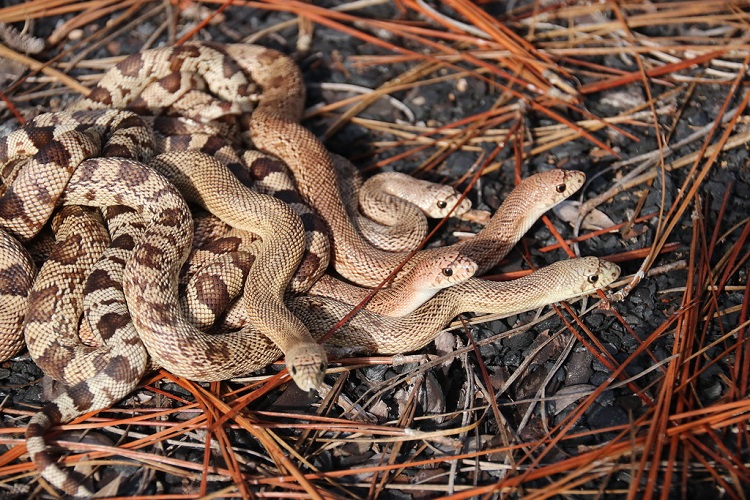With their long bodies, unnerving stare, and reputation for striking and biting, snakes have long been seen as harbingers of death with their deadly venom.
Yet interestingly enough, very few snake species are aggressive, and as such most will go out of their way to avoid humans.
In fact, only one in five of the world’s snake species are venomous.
So, what is it about these often shy and retiring reptiles that put most people on the defensive when encountered in the wild?
For, in essence, just like any other animal, snakes play a vital role in the health of our planet’s ecosystems, and without them, our food chains would collapse.
In this article, we look at the snake and how it has evolved into the modern species of snake found today.
Etymology of Snakes
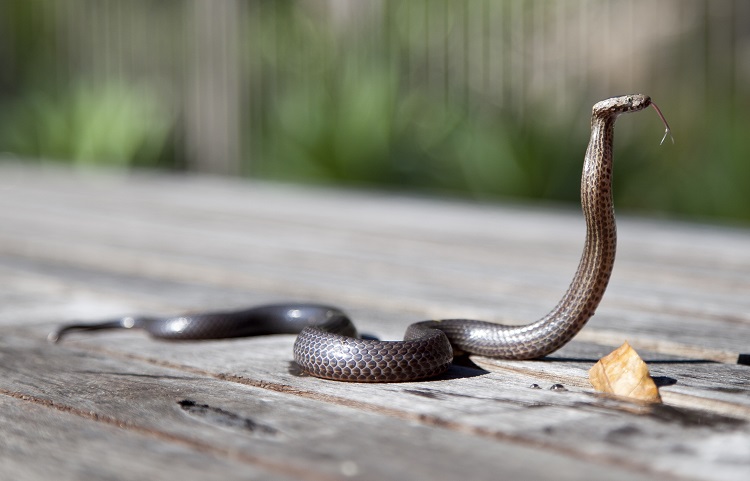
Interestingly, back in the 1300s, the word serpent was used when referring to what is known as a snake today. In fact, the earliest record of the word snake came about in 1590 when it was used to refer to a treacherous person.
The actual word snake originates from a mix of different languages, making it difficult to pinpoint its exact origins.
For example, the word snake was derived from the Old English word ‘snaca.’ This word, in turn, likely came from the Proto-Germanic word ‘snakon,’ which is likely to have its roots in the ancient Pro-Indo-European words ‘snag’ or ‘sneg,’ which literally means creeping things or to crawl.
Ironically other languages also used similar sounding words to denote snake, such as Old Norse ‘snakr’ and the Swedish word ‘snok.’ While the old High German word ‘snahhan’ and the Old Irish word ‘snaighhim’ both mean “to creep.”
And so it was by the late 16th century that the word serpent was gradually replaced by the word snake in reference to the animal of today.
Snake Evolution
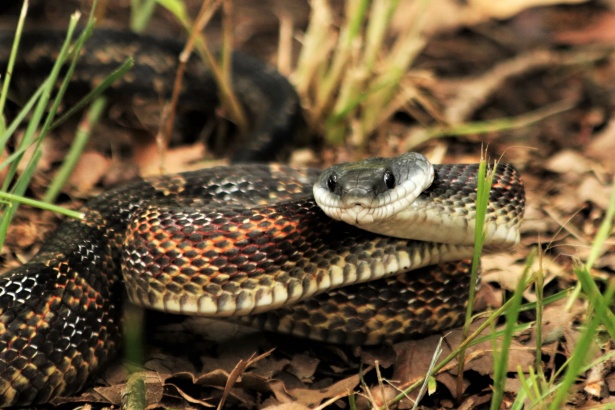
Modern snakes are part of the order Squamata (scaled reptiles), which includes some 10,900 species of lizards, snakes, and worm lizards.
In fact, snakes are thought to have evolved from terrestrial lizards some 163.5 million years ago.
Fossils
Unfortunately, there are very few snake fossils on record to date due to a snake’s skeleton being fragile and small, making fossilization most unusual.
In fact, the oldest of these fossils is the Eophis underwoodi, a small four-legged snake that lived about 167 million years ago in southern England.
But various theories still abound as to the true origins of the snake. One is that the snake’s ancestors were related to now-extinct aquatic reptiles (Mosasaurs), which evolved into an animal very similar to today’s sea snakes.
Another theory speculates that an early snake relative, a two-legged burrowing animal, the Najash rionegrina, slowly evolved to adapt to subterranean life.
Genetic Basis of Snake Evolution
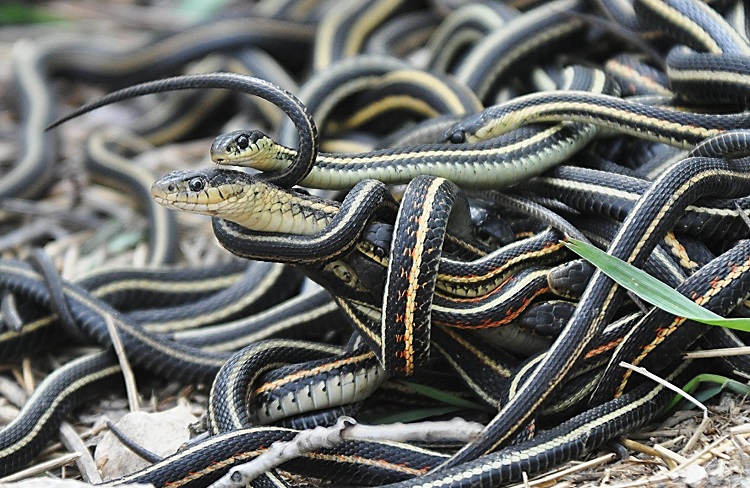
When stacking the snake’s close ancestor, the lizard, up against the snake in the form seen today, what genetic changes have occurred?
First off is the loss of limbs in a snake. In fact, recent studies conducted in 2016 reported that limb loss in snakes is associated with DNA mutations in a regulatory region required for limb development.
Other external genetic changes in snakes include a lack of moveable eyelids and external ear openings.
While internally, snakes have lost their urinary bladder, and their internal organs have become elongated.
However, snakes, unlike lizards, have an increased number of vertebrae, have even developed a venom system for subduing prey, and have a tracheal lung in their neck region.
Snake History
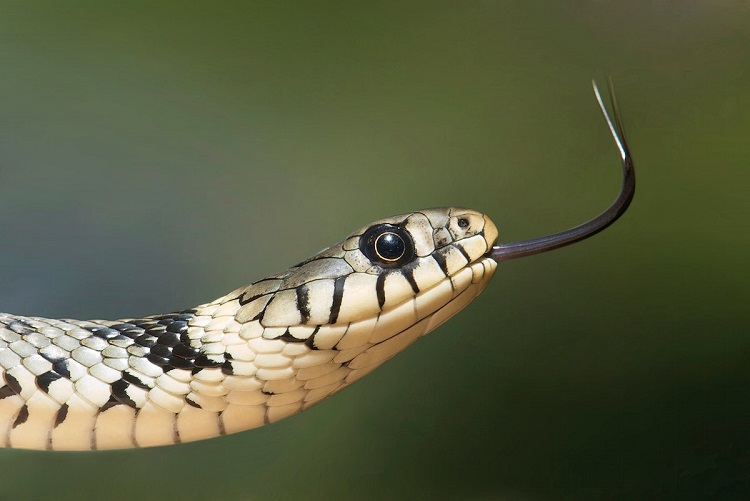
Since prehistoric times, snakes have been worshipped, feared, or revered in nearly every culture.
In fact, serpent worship can be traced back to carvings dating to 10.000 BCE.
Long associated with evil, temptation, and lies in the Christian tradition, snakes, however, in other cultures such as Egypt, Greece, and North America, symbolize renewal, rebirth, and immortality.
These beliefs stem from the snake’s ability to shed its skin, associated with immortality, and its ever-open eyes, representing its ability to know all things past, present, and future.
What Does a Snake Look Like?
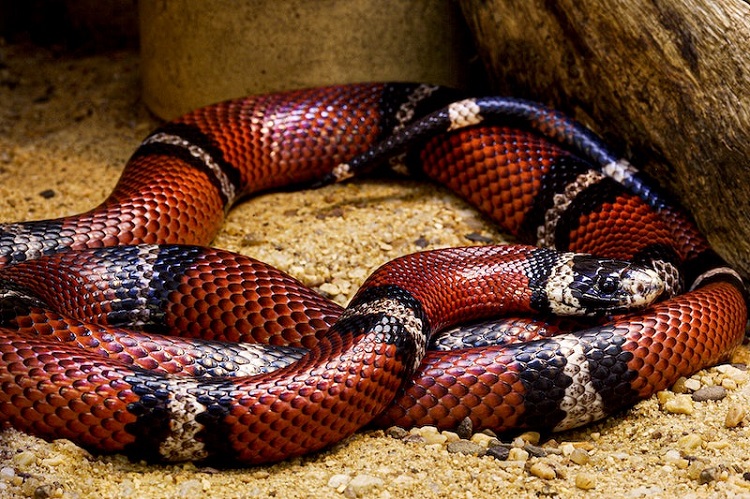
Elongated, limbless, and with a short tail, snakes come in many colors and body shapes, from the size of a matchstick to about 30 feet long, with a single excretory opening at the bottom of their body near the tail.
Snakes have a unique texture in that they have two types of scales, with their top scales overlapping like shingles on a roof, while the bottom of the snake is covered by very wide, short scales that can be likened to the rungs of a ladder.
A snake’s head may be rounded or triangular, depending on its species, with nostrils, a mouth, no external ears, and two unblinking eyes due to a snake having no eyelids.
Their mouth contains teeth that line their upper and lower jawbones, with only venomous snakes containing fangs.
Distribution and Habitat
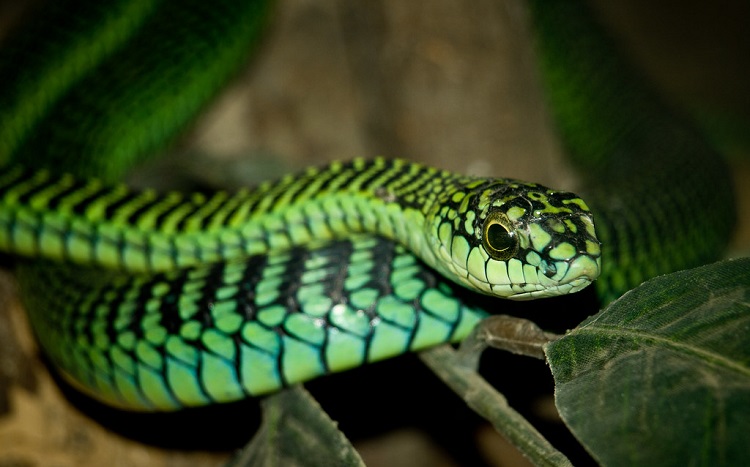
Different species of snake are found worldwide, ranging from as far north as the Arctic Circle, where you find the European Viper, to southward through Australia with its 140 species of land snakes.
In fact, some 60 species of marine sea snakes, such as the Olive sea snake, can be found in the Pacific and Indian oceans, while the Himalayan Pit Viper can be found as high up as 16,000 feet in the Himalayan Mountains.
As such, the only continent where snakes are not present is Antarctica, while islands such as New Zealand, Ireland, and Iceland also have no snakes.
Snake Classification
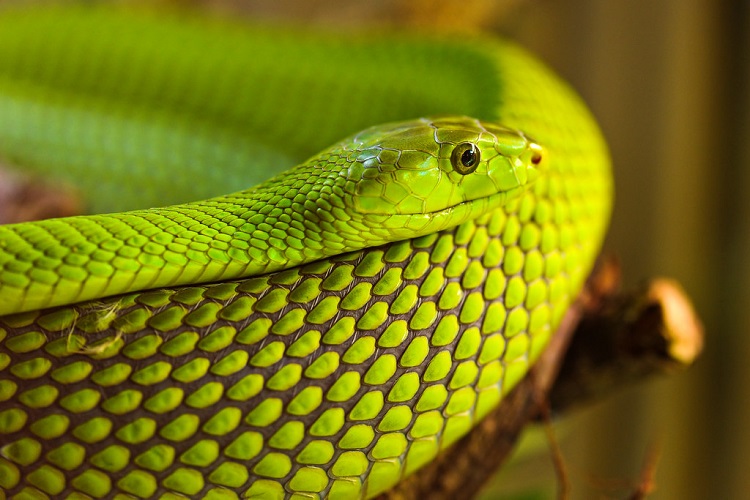
From tree-dwelling and aquatic to nonvenomous and venomous, all modern snakes, although containing similar DNA and anatomy, are split into various infra orders.
Here’s how it works.
Snake Family
All snakes are part of the class Reptilia (reptilian) and fall under Squamata, which comprises lizards, snakes, and worm lizards.
From this order, snakes are further classified into the suborder Serpentes (Serpents), which is broken down into two infra orders referred to as Alethinophidia with 25 families and Scolecophidia with five.
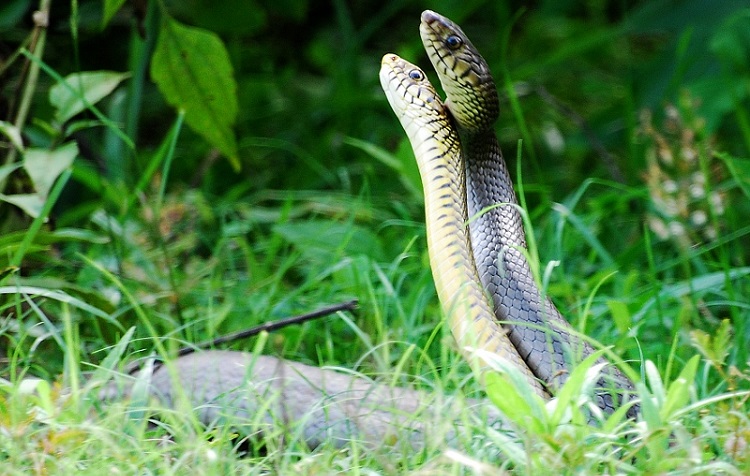
Different Types of Snakes
Different types of snakes include constrictors such as Boas and Pythons, venomous snakes such as Death adders, Vipers, Shield nose cobras, and Boomslangs, nonvenomous snakes such as Gopher snakes, Indigo snakes, and the King snake and aquatic snakes such as Coral reef snakes.
Some notable snake species include one of America’s most dangerous snakes, the Mojave rattlesnake and the world’s most venomous snake, the Inland taipan
Legless Lizards
Interestingly snakes are not the only limbless reptiles of their class; some species of lizard, such as the Slowworm and Glass snake, have lost their hind limbs and, despite looking similar to snakes, are not.
Snake Biology
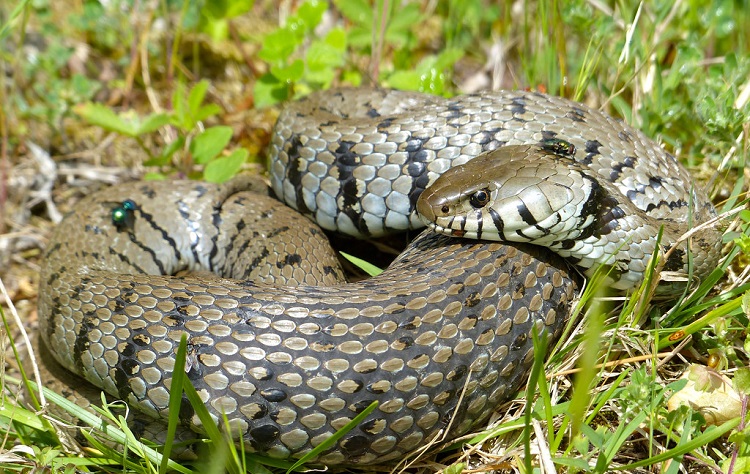
We all know what a snake looks like, but what truly defines this species of reptile?
Size
In general, most snakes are relatively small and measure about 3.3 feet in length, with the smallest of the species, the Barbados thread snake measuring 4.1 inches.
On the other end of the scale, the Reticulated python measures up to 16 feet. While in comparison, the Green anaconda snake measures about 30 feet and is considered the heaviest snake on earth, weighing almost 550 pounds.
Perception
A snake’s vision varies according to its species. While some have keen eyesight, others can only distinguish light from dark.
As such, vision is generally considered best in tree-dwelling snakes and weaker in burrowing snakes.
In fact, most snakes that hunt during the day and depend on their eyesight have evolved lenses that act like sunglasses and filter out UV light.
In addition to their eyesight, Pythons, Pit vipers, and some Boas have deep grooves on their snout known as infrared-sensitive receptors, enabling them to ‘see’ the heat radiated from warm-blooded prey.
Also, the underside of a snake is sensitive to vibration, which enables it to sense and detect the approach of animals by sensing the faint vibrations made by them in the ground.
Skin
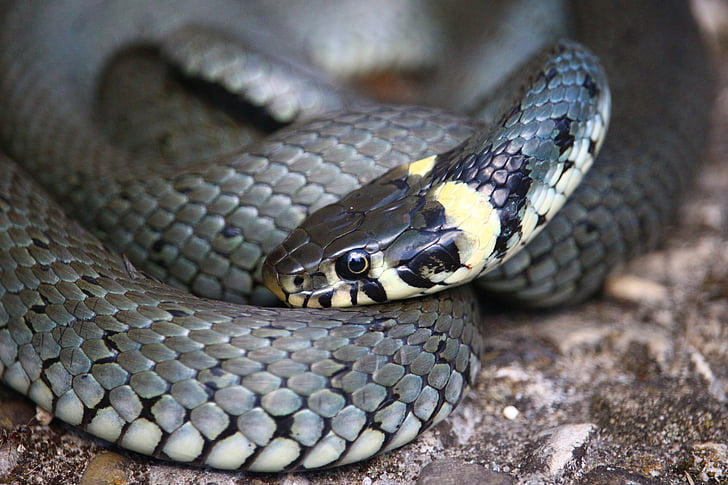
The skin of a snake is made up of two layers. The colorful soft tissue underneath its scales is called the dermis, and the hard outer layer is known as the epidermis, mainly consisting of see-through scales.
Contrary to popular belief, snakeskin has a smooth, dry texture and is not slimy and moist.
Molting
A recurring event in all snakes is the molting or shedding of the external skin. This serves several purposes as it allows the worn, old skin to be replaced but also removes parasites such as ticks and mites that live in the skin.
Interestingly a young snake may shed its skin multiple times a year, while adult snakes may only shed once or twice a year.
The snake’s eyes turn cloudy or milky blue just before molting occurs, and the skin becomes dry and dull. Then, finally, the snake will stop eating and move to a safe place.
During this time, the inner surface of the old skin liquefies, causing it to separate from the new skin underneath.
After a few days, once the process is completed, the snake begins to rub up against rough surfaces to help wriggle out of its old skin, which generally splits close to its lips, and its eyes become clear.
Skeleton
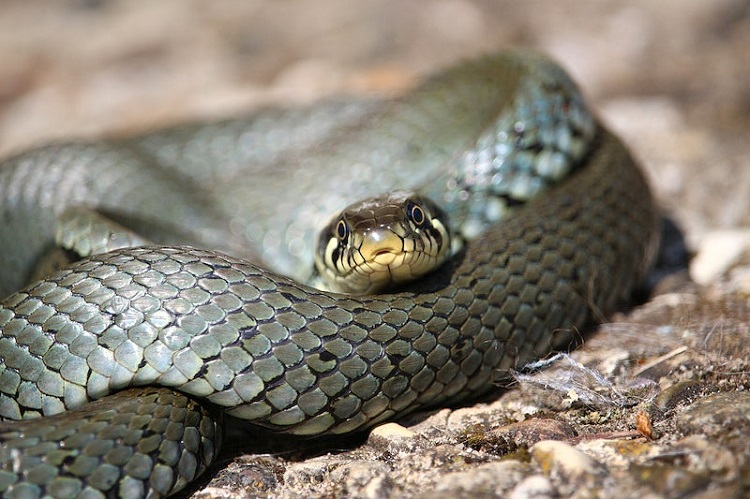
In most snakes, the skeleton consists largely of the skull, hyoid, vertebral column, and ribs, with some species still bearing the remnants of rear limbs and a pelvis.
The skull of a snake is solid with mobile jaw bones, which can be manipulated to ingest larger prey easily. While the hyoid is a small bone in the neck region of the snake that is an attachment for the tongue muscles.
Depending on the snake species, the vertebral column has between 200 to 400 or more vertebrae with projections that allow muscle attachment for locomotion without limbs.
Additionally, every vertebra has a pair of ribs attached to it, except for those in the tail, to protect their internal organs.
Internal Organs
Due to their elongated bodies, snakes have some interesting internal features, such as their heart, which controls their circulatory system and can also move around when large prey is ingested.
Snakes also have a gall bladder, pancreas, and spleen; in most species, there is only one functional lung.
In fact, due to the unique shape of the snake’s body, paired internal organs such as the kidneys and reproductive organs are staggered one ahead of the other.
Venom
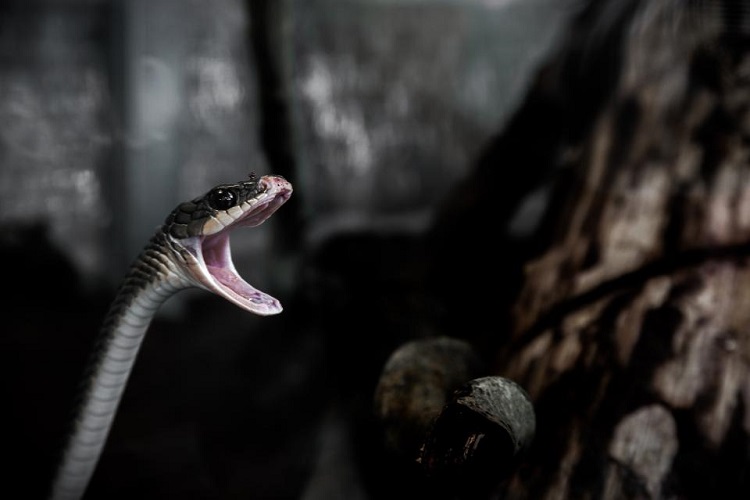
Interestingly using the term poisonous snake is generally incorrect, for poison is ingested or inhaled, whereas the venom produced by snakes is injected into the victim.
Venomous snakes include Coral snakes, Boomslangs, Copperheads, Cottonmouths, Bushmasters, and several other species.
The venom of these snakes is made from modified saliva, either injected by hollow fangs situated on the upper jawbone in the front of the mouth or by rear fangs located towards the back of the mouth.
As such, the venom from snakebites is a complex mixture of proteins such as hemotoxins which attack the circulatory systems, neurotoxins which attack the nervous system, bungarotoxins which affect muscle tissue; and cytotoxins, which attack cells directly.
In fact, there are many toxins that affect the body in various ways, and almost all snake venom contains an enzyme that helps spread the venom rapidly.
Behavior
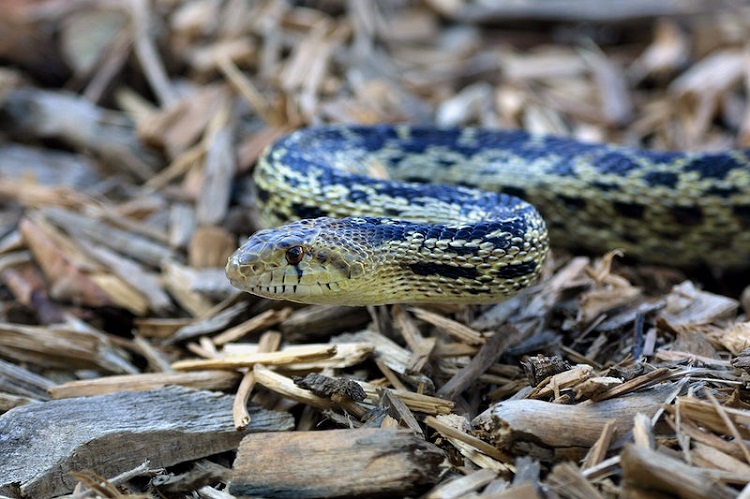
Snakes are secretive and shy animals with very little known about their ways in the wild.
Here, however, are some of their behaviors that have been well documented.
Winter Dormancy
In regions too cold for snakes to tolerate remaining active, they will enter a brumation period. Unlike hibernation, where animals are asleep, bromating means the snakes are inactive but awake.
During this time, snakes may brumate under rock piles or inside burrows or fallen trees.
Feeding and Diet
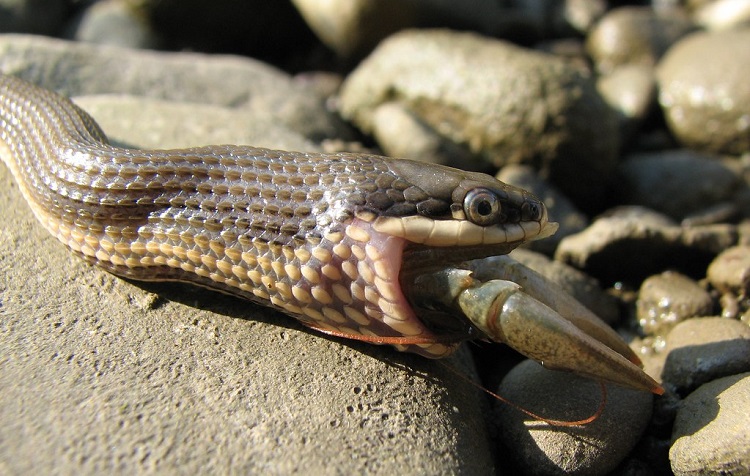
All snakes are carnivores and prey on small animals such as fish, worms, insects, small mammals, burrowing lizards, frogs, and even scorpions.
Snakes cannot chew or bite their food, so they must swallow their prey whole, after which they become dormant to allow the digestion process to occur.
Typically, digestion can take up to three to five days, depending on the size of the prey the snake has ingested. A juvenile python, for instance, might start out feeding on lizards and frogs but will graduate to an antelope or small deer as an adult.
In fact, the snake’s digestive enzymes are so highly efficient that everything of the prey is absorbed, barring claws, feathers, and hair which is excreted along with their waste.
Hooding and Spitting
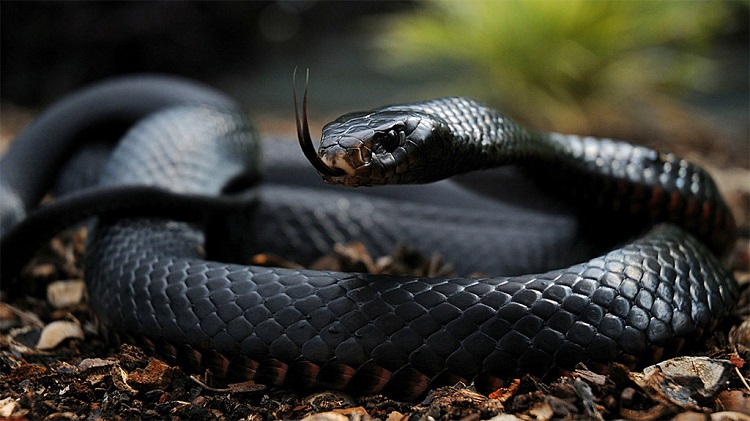
While hooding is mainly seen in cobras as a visual deterrent, it can also be accompanied by spitting venom toward the threatening object and even hissing sounds.
In fact, studies on captive cobras showed that they could raise their body length during hooding by up to 22 percent.
Locomotion
To overcome their absence of limbs, snakes have developed several different methods of locomotion.
The first and most common method is serpentine locomotion, where the snake’s body assumes a series of S-shaped loops, with each loop pushing against any resistance it can find.
Another method of movement is concertina locomotion, where the snake’s body closely resembles an opening and closing accordion.
The third method is called rectilinear locomotion or caterpillar, as the snake’s body moves in a straight line relying on its flow of muscle contractions along its side.
And lastly, there is what is referred to as sidewinding, where the snake must move in an environment with no objects to push against, such as a sand dune or mud flat.
Snake Reproduction and Lifespan
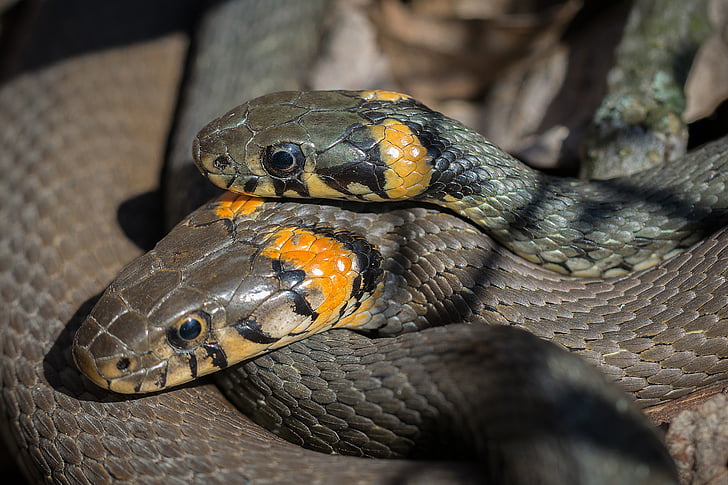
Snake reproduction occurs in the spring after hibernation when the female of the species lets the male know she is ready to mate by releasing pheromones from the skin glands on her back.
After mating, a female snake lays between 10 to 30 eggs for small snakes and up to 100 for large snakes.
After giving birth to the eggs, most female snakes abandon them, leaving the babies to fend for themselves.
On average, the incubation of a snake egg is up to 57 days. But interestingly enough, not all snakes lay eggs. In fact, several species, such as vipers, boas, anacondas, and most water snakes, give live birth to young.
As such, a female snake can give birth to live young or lay eggs one to two times a year.
In general and under the right conditions, the newly hatched snakelet reaches maturity within two to four years, depending on the species, and can live from 20 to 30 years.
Interesting Facts About Snakes
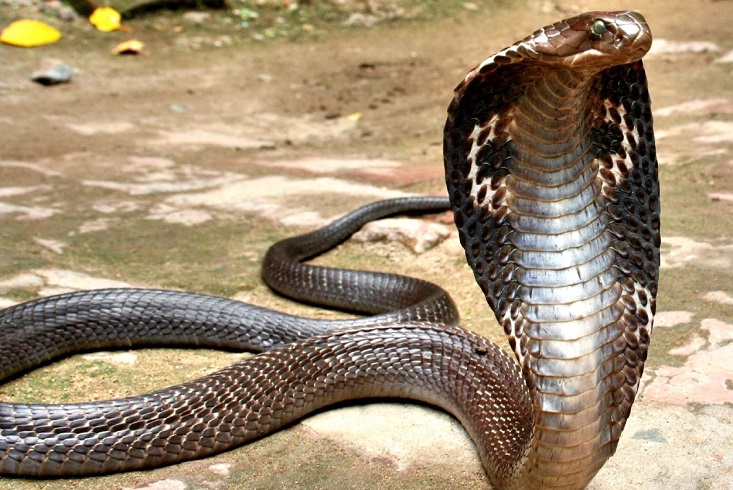
Did you know that some species of snake, such as the King cobra, Indigo snake, and Branded Krait, for instance, may turn to cannibalism and eat their own order so as not to die of starvation?
Here are some other interesting facts about snakes.
Snakes Do Not Have a Large Appetite
While feeding habits vary from species to species, some snakes, such as the Python, can go a whole year without eating if they have eaten a giant meal, such as a deer animal.
Snakes Are Expert Ambush Predators
Snakes such as vipers and pythons are also experts in ambushing predators. Sometimes they can wait in one spot for months and wait for prey to pass them by.
This is due to their cold-blooded bodies, where they can shut down non-essential bodily functions and slow their metabolism, conserving their energy and storing nutrients for growth.
Interactions With Humans
Since time immemorial, snakes and humans have had a fascinating relationship, with some cultures even embracing the snake for entertainment purposes or consumption.
Bite
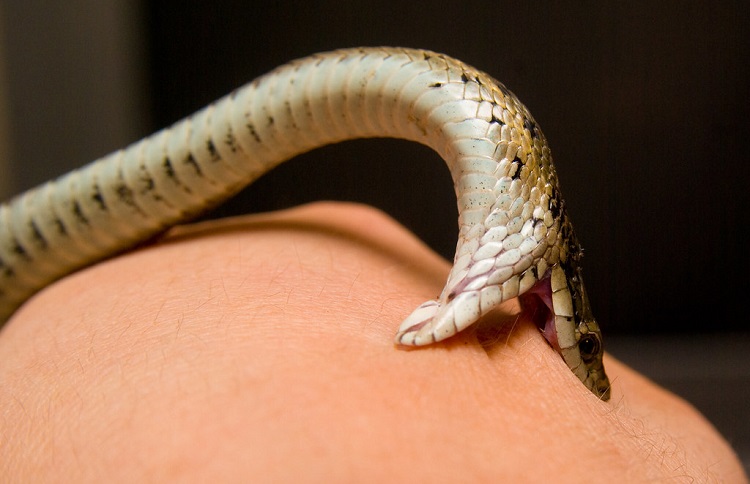
Very few snakes do not ordinarily bite humans unless startled, provoked, or injured. In fact, they will avoid contact with humans if at all possible.
The bite of a non-venomous snake is usually harmless as its teeth are not adapted to inflicting puncture wounds or tearing flesh. On the other hand, venomous snakes pose a far greater hazard to humans.
In fact, the World Health Organization estimates that some 138,000 people die each year, and there are three times as many permanent disabilities and amputations recorded as a result of snake bites.
Snake Charmers
In some parts of the world, especially India, snake charming is a roadside show where a charmer plays tunes on a flutelike instrument, and the snake, held in a basket, responds to the music.
Snake charming, though as a profession, is slowly dying out in India due to the Wildlife Protection Act, which prohibits snake charming on the grounds of animal cruelty.
Trapping
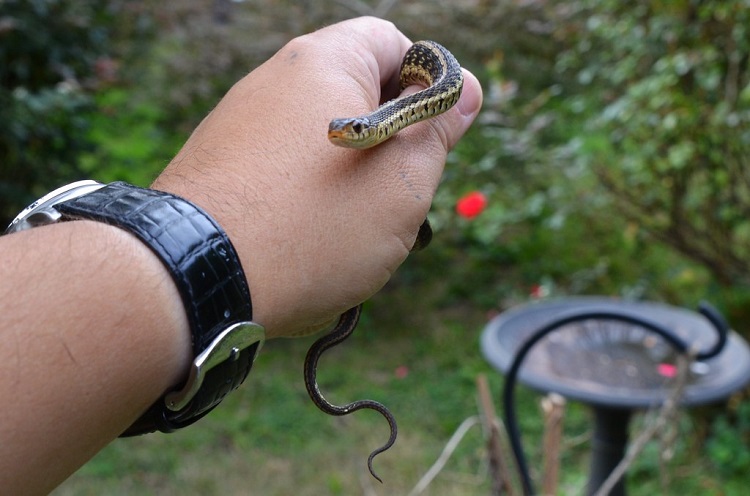
In India, the Irulus tribe, who are hunter-gathers, have practiced the art of snake catching for years to either consume or for the snakeskin industry.
But with the banning of the snakeskin industry in India, this tribe switched to catching snakes to remove their venom and then releasing them back into the wild.
Consumption
Although not commonly thought of as food, snake meat, and blood are consumed by some cultures worldwide and are considered delicacies.
In fact, snake soup is a popular Cantonese cuisine, while cooked rattlesnake meat is commonly consumed in Texas.
While in countries such as Thailand, Indonesia, and China, amongst others, drinking the blood of a snake, usually mixed with some form of liquor, is said to increase sexual virility.
Pets
Snakes, especially the docile species such as the Ball python and Corn snake, are considered good pets, especially in the Western world.
For unlike other companion animals, snakes require minimal space and are considered low-maintenance pets. As a result, a captive breeding industry has sprung up to meet the demand for pet snakes.
Symbolism
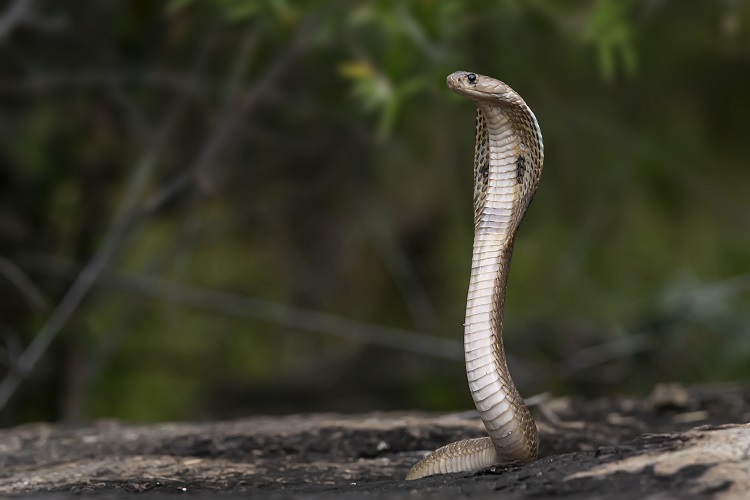
As mentioned previously, snakes have long been revered for possessing magical and protective powers throughout natural history.
In fact, in Egyptian history, the snake, particularly the Nile cobra, adorned the Pharaoh’s crown and was worshipped as one of the gods.
And even today, snake symbols still abound, such as the use of snakes to symbolize pharmacy, healing, and medicine in general.
Medicine
Today modern medicine is currently studying and researching the compounds that make up snake venom, a potential treatment for cancer, stroke, heart disease, hypertension, pain, hemophilia, and to control bleeding.
Snake Population
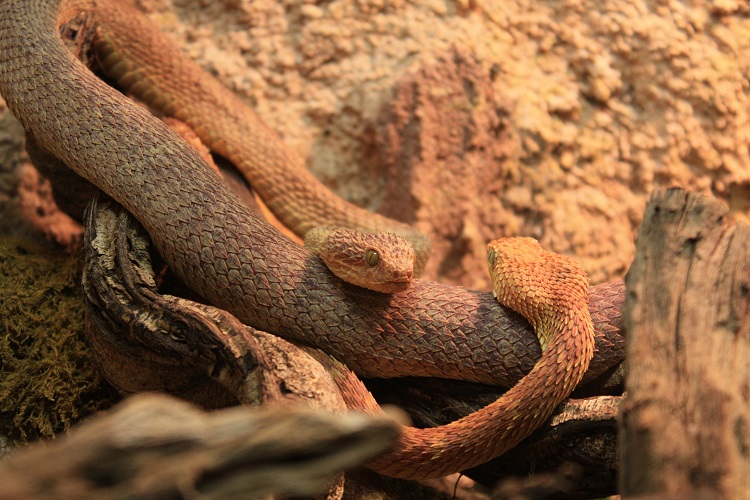
From the world’s deserts with their various species of Rattlesnakes and Vipers, amongst many others, to the subtropical regions of Southeast Asia with their Reticulated pythons and the Amazon River Basin in Brazil with its Anacondas, there are nearly 3,000 species of snakes to be found.
How Do Snakes Hunt?
Interestingly enough, a snake tracks its prey using smell by collecting the airborne particles left by its prey with its forked tongue.
In turn, these particles are passed on to the Jacobsons organ in the snake’s mouth, where they are examined.
Many species of snake can also track their prey by sensing body heat, and once caught, they either use venom or constriction or a combination of both to kill their prey.
How Many Snakes Are Venomous?
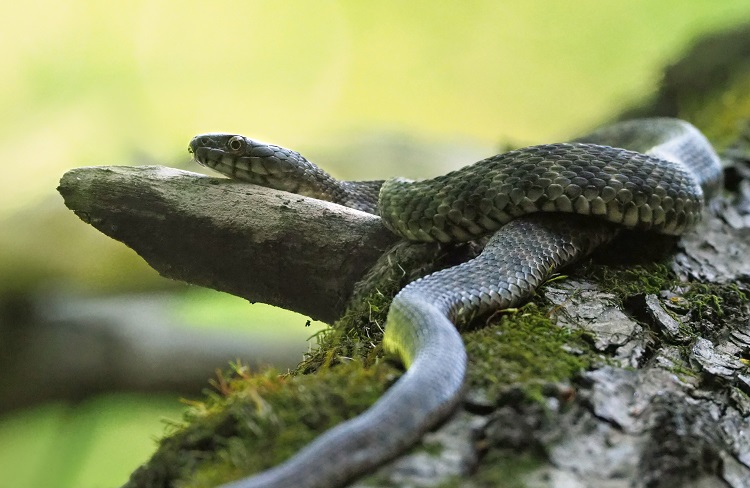
There are around 725 species of venomous snakes found all over the world. Out of these, 250 can kill a human with one venomous bite.
Snake Predators and Threats
While it may be hard to believe, snakes have many enemies. First off, there are natural predators of the wild such as coyotes, foxes, mongooses, raccoons, wild boars, large birds, and even other snakes.
And just like other animals in the wild, snakes are also exposed to threats from human activities such as habitat destruction, disease, invasive species, over-harvesting, and even climate change.
Habits
For the most part, snakes spend most of their time resting, as their primary concern is either live food or thermoregulation.
This means that a snake needs to maintain an optimal body temperature of 70 to 90 degrees Fahrenheit; below that, it becomes sluggish.
And it is for this reason that snakes can be found basking in the sun or hiding out in the shade.
Conservation Status
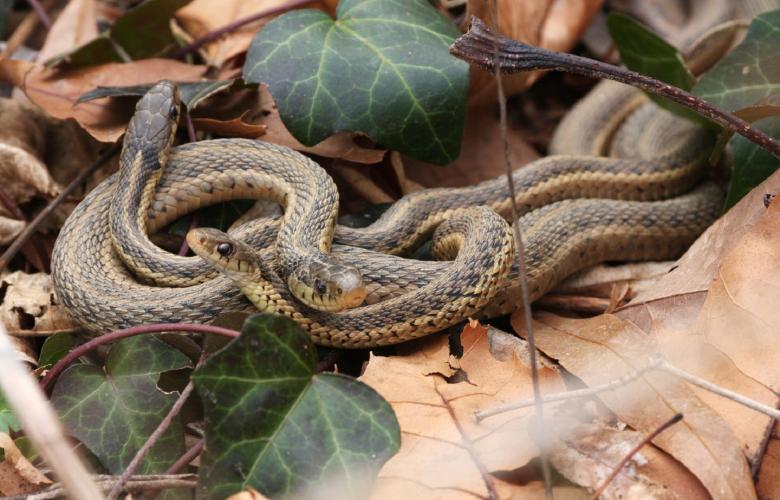
According to the International Union for the Conservation of Nature (IUCN) Red List of threatened species, some 12 percent of snake species are listed as threatened, with their populations in decline.
But perhaps more alarming is that 62 percent of the world’s reptile species have not yet been assessed by ICUN, meaning that their conservation status is largely unknown, with some species being thought to be on the brink of extinction.
Sadly the belief by many that snakes are undesirable reptiles to have around has resulted in a lack of funding for most snake species and little attention from society.
Conclusion
Love or hate them, snakes have stood the test of time despite having no limbs.
Yet sadly, their numbers are currently in decline globally due to habitat deterioration and a loss of prey.
Therefore, it is up to us to restore and protect remaining snake habitats, use fewer herbicides and pesticides, and, most importantly, educate ourselves on this reptile’s vital role in our ecosystem.


